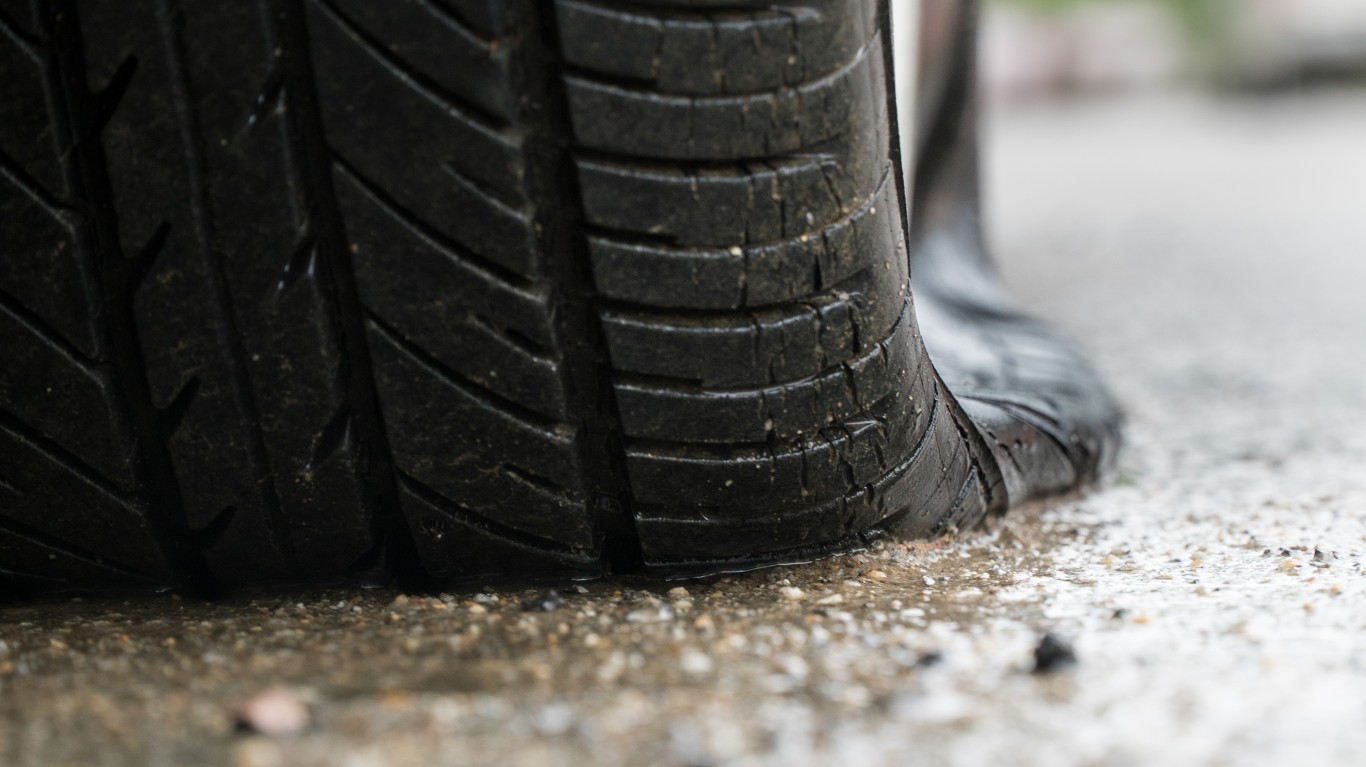Investing
Time to Sell Canadian Tire Stock? Retailer Blames Weather for Q1 2023 Earnings Decline

Published:

Canadian Tire (CA:CTC.A) said it was the weather that was the big factor in its May 11 first-quarter 2023 earnings report, as the multi-brand retailer explained why revenue and sales were lower than a year ago. CTC stock dropped 2.5%.
“Our Q1 financial results were impacted by a number of factors. Our Retail segment was impacted by the fire at our A.J. Billes distribution centre, as well as unseasonably mild winter weather and a slow start to spring in several regions of Canada,” said Greg Hicks, president and CEO, Canadian Tire Corporation.
Retail executives rarely mention the weather except when it’s convenient. Q1 2023 was one of these times. So, with yesterday’s decline paring year-to-date Canadian Tire’s stock gains at just below 17%, it could be time to sell.
To be sure, though, the quant model says otherwise. Fintel’s Value score for the Canadian retailer’s stock is 85.13. Recall the proprietary scoring model ranks companies based on their relative valuation. Scores range from 0 to 100, with 100 being the most undervalued.
Weathered Report
Canadian Tire’s Q1 2023 revenue was $3.71 billion, 3.4% lower than $3.84 billion a year ago. (All figures in Canadian dollars unless otherwise noted.) However, while they were down year-over-year, they were $70 million higher than the analysts consensus estimate of $3.64 billion.
What wasn’t good were the same-store sales numbers across its various banners. Mark’s and SportChek saw 4.8% and 3.7% same-store sales growth, respectively, while its largest banner, the eponymous Canadian Tire, which accounts for 58% of its $3.37 billion retail revenue, saw a 4.8% drop in same-store sales.
On the bottom line, the company’s normalized profit in the first quarter was $57.6 million, or $1.00 a share, down 68.6% from $183.6 million in Q1 2022, or $3.06. That’s excluding the $49.8 million after-tax cost of the fire at its Toronto-area distribution center. The GAAP net income in the quarter was $42.8 million, 80.3% lower than a year earlier.
Balking at Big Tickets
Canadian Tire reported that consumers aren’t buying nearly as many big-ticket items. That played a part in the revenue and earnings decline in the quarter. Overall consumer spending, according to its credit card data, also slowed for the first quarter since 2020, suggesting Canadians have cut back on their spending due to inflation.
“‘The current high inflation rates have led customers to prioritize essential products over higher-ticket discretionary ones,’ Mr. Hicks said on the call, adding that shoppers are ‘mindful’ of their spending as they renew mortgages at higher interest rates, and also return to spending money in areas that declined during the pandemic, such as travel and restaurant dining,” The Globe and Mail reported.
Bright Points
In July 2018, Canadian Tire acquired Norwegian sportswear brand Helly Hansen for $1.04 billion, including the assumption of $50 million in debt, net of cash.
In the first quarter, the brand’s revenue increased by nearly 23% to $208.4 million from $169.6 million in Q1 2022. It accounts for 6.2% of its retail revenue, up from 4.8% a year earlier. The only downside for the brand in the first quarter was a $36.5 million expense to exit its Russian business.
The other highlight was its Financial Services unit. Revenue in the first quarter was $369.8 million, 11.5% higher than in Q1 2022. Revenues were higher due to higher interest income on its receivables growth. However, its pre-tax income fell 5.3% to $118.7 million from $125.3 million a year earlier, on an 842 basis point decline in its gross margin, to 57.2%.
The unit finished the first quarter with a loans receivable portfolio of $6.53 billion, up from $5.94 billion a year earlier but down from $6.68 billion at the end of December. Its expected credit losses were $896.9 million, or 13% of its loan portfolio, down 30 basis points from Q1 2022.
Unpaid Balances
A tell-tale sign the consumer is struggling, the financial unit finished the first quarter with 2.28 million accounts having an unpaid balance on their Canadian Tire credit card, up 4.4% from a year ago, while the average account balance was $3,059, 5.8% higher than in Q1 2022.
As long as interest rates and inflation remain high, its Canadian Tire banner will continue to struggle to grow its sales.
Portfolio manager David Baskin, chairman, and president at Baskin Wealth, unfortunately didn’t have good news for Canadian Tire shareholders when appeared on BNN Bloomberg TV on May 11.
“You know, I was in a Canadian Tire store on Saturday morning, and I have to say it was the first time I was physically in one in a couple of years,” Baskin stated. “And I think that’s really the problem here. A lot of the things that people shop for at Canadian Tire, they can easily shop for at Amazon or other online retailers. I think that’s had a major impact on the company and the brand.”
Weather isn’t the only thing holding back Canadian Tire.
This article originally appeared on Fintel
Thank you for reading! Have some feedback for us?
Contact the 24/7 Wall St. editorial team.